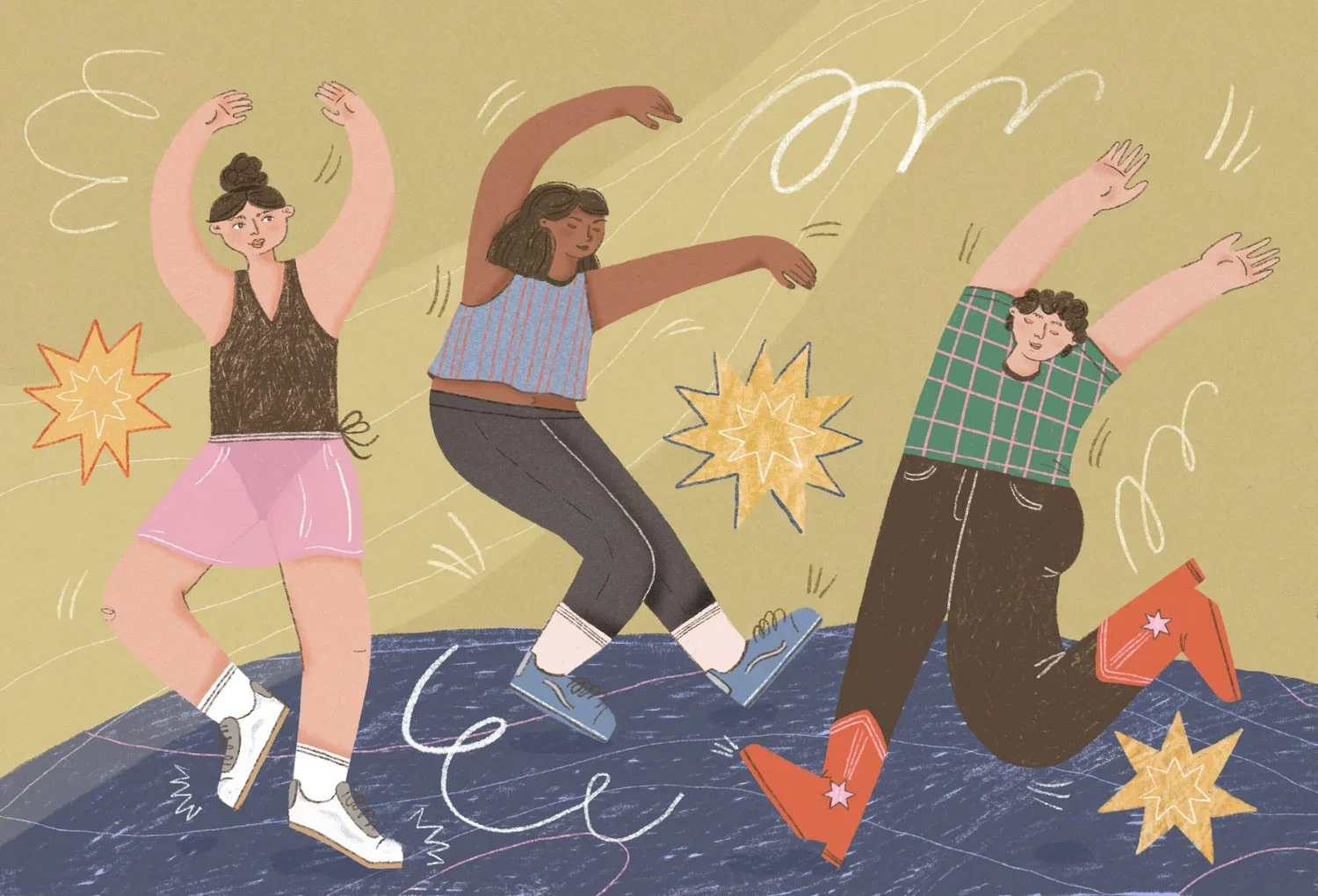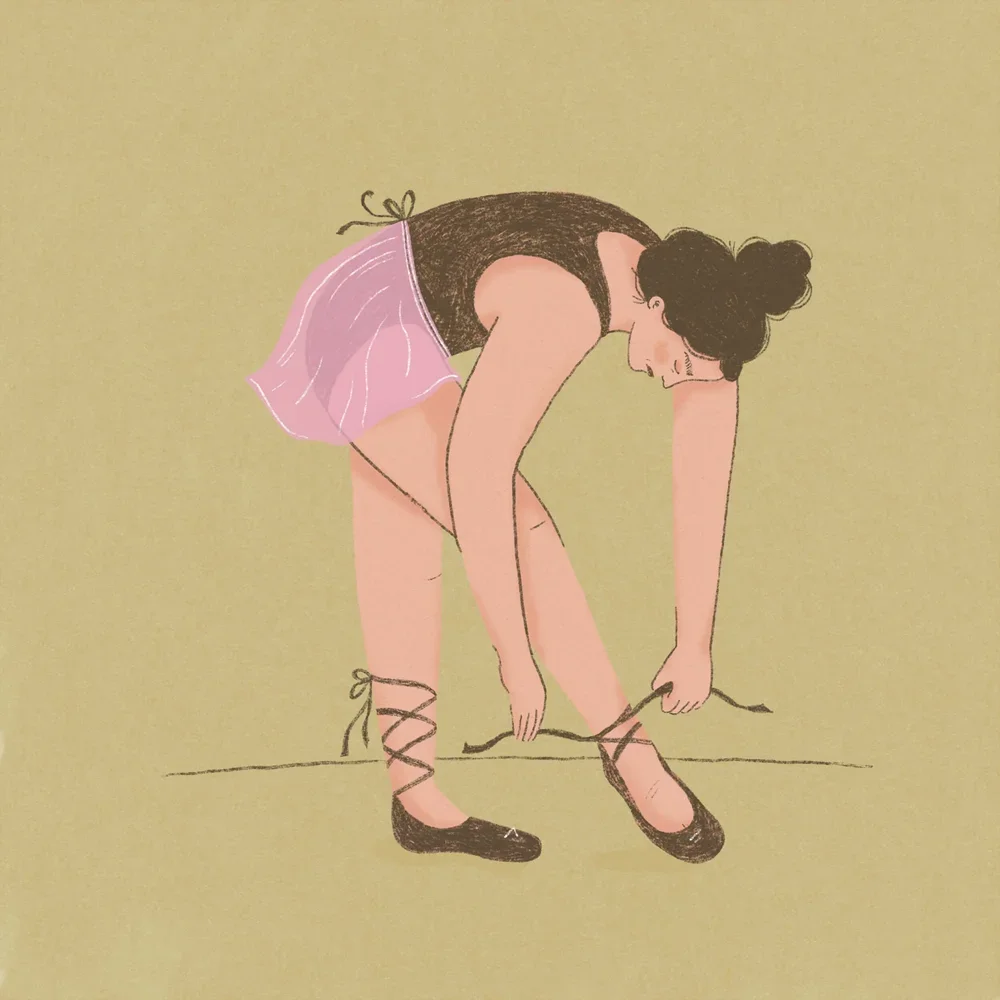Rhythm is a dancer: Healing through movement
Illustrations by Martha Bräuer
Who doesn't enjoy moving to their favorite song? Imagine using dance as a therapy to nurture your mind, body, and soul. There is a well-balanced connection between music, movement, and emotional sensitivity and dance therapy uses this connection to help you express yourself and feel better emotionally. It's not just about grooving to your favorite tunes (powerful on its own), but also using your body's language to work through emotions and heal inside.
What dance therapy is all about
Dance therapy — also known in the USA as dance/movement therapy (DMT) — is all about holistic integration. “That's a fancy way of saying using the mind, body, and emotions to guide the process of therapy and empower people to think of their body as a resource full of wisdom and healing,” said Rayni Collins, board-certified dance/movement therapist.
Every person has a different level of experience with expression through the body, and dance therapy can be a combination of verbal and non-verbal techniques used to support better social, emotional, or physical health.
How dancing can make people feel better
Movement and motion are inherently linked to emotions. For example, trauma expresses itself by limiting our range of motion in our hips, while stress more generally can cause us chest, back, and shoulder pain as well as chronic issues such as migraines.
“These manifestations of stress and trauma are simple examples of how the body automatically stores information about our experiences whether we pay attention to them or not,” said Chantelle Doswell, a traditional therapist trained in dance/movement trauma work. “Emotions are not just thoughts, they are physical experiences that we can either allow to happen, metabolize through our body, and eventually pass or that get stuck.”
Dance/movement therapy can release stored trauma and wisdom in a "body-up" method, which helps us process things without the need for direct verbal expression. It can also increase a sense of understanding of how to relax the body, sustaining mindfulness while "triggered" (experiencing a reminder of a negative feeling). In general, “dance movement therapy has proven to reduce trauma and PTSD symptoms, depression, and anxiety,” Doswell added.
Dance can help process emotions
Sometimes it's hard to understand our emotions or we might notice that by talking about them we seem to snowball the concern and get even more stressed or worried. Research suggests dance/movement adds support for physically processing and expressing an emotion, even when an individual does not yet understand its meaning or know how to communicate about it with words.
“With the assistance of a therapist to guide the process, it can help you not only learn how to be more flexible by using your body as your resource, but also deepen your understanding of your needs, desires, and how those things show up in your body naturally,” Collins said. Developing this self-awareness is an invaluable tool to promote better coping and self-compassion. “Some issues, such as eating disorders or body dysmorphic disorder, are not as well suited for dance therapy.”
Techniques of dance therapy
According to Good Therapy, authentic movement is the most prominent technique that does not involve movement and ends in stillness, where a person explores movement and stillness as a form of mindfulness.
Mirroring and attunement are similar techniques that promote empathy and self-awareness by the dance therapist, literally or closely mirroring the movements of the client so they can experience what it is like to be "with" them. “Mirroring is a fundamental technique in dance therapy that helps build trust and comfort in silence and movement throughout the process,” Doswell said. “Whereas, attunement refers to the felt sense of tension in another person's body.”
These methods, along with more existential techniques like reenacting your developmental phases, can take place but are not guaranteed in any session, as the process is client-centered and led. Doswell notes that during all this, talking is in no way prohibited.
People of any age or ability can benefit from dance therapy
Everyone has a body, and dance/movement therapy meets you where you are. It is meant to be a method where the therapist follows your lead; you are not forced to do anything that doesn't come naturally.
“This means it’s entirely your choice if you want to push your limits, which can benefit anyone, particularly those who have limited verbal communication (for any reason),” Collins described.
“Older populations find it helpful in improving symptoms of dementia, arthritis, and mobility problems, while also promoting increased body integration for those struggling with social issues or feeling uncomfortable in their bodies,” Doswell added.
Children, teens, and young adults might find increased coordination, improved posture, enhanced cognitive abilities, and boosted self-esteem after practicing dance therapy.
You can try some of the techniques at home with the help of this practice video or do some dance meditation for emotional relief. Doswell suggested, “To get started, check if your insurance covers a DMT therapist, visit certain YMCA locations (which offer courses for members in some cities), or look at the directory of DMT at the American Dance Therapy Association (ADTA).”
Hazra Khatoon is an independent journalist with a Master’s degree in journalism, who writes about health, climate, tech, travel, and culture. Her work has appeared in Well+Good, Insider, Giddy, South China Morning Post, Sentient Media, StyleCaster, Discover, Evening & Standard, and Chatelaine, among others.
your contribution is tax-deductible
KEEP EXPLORING:


